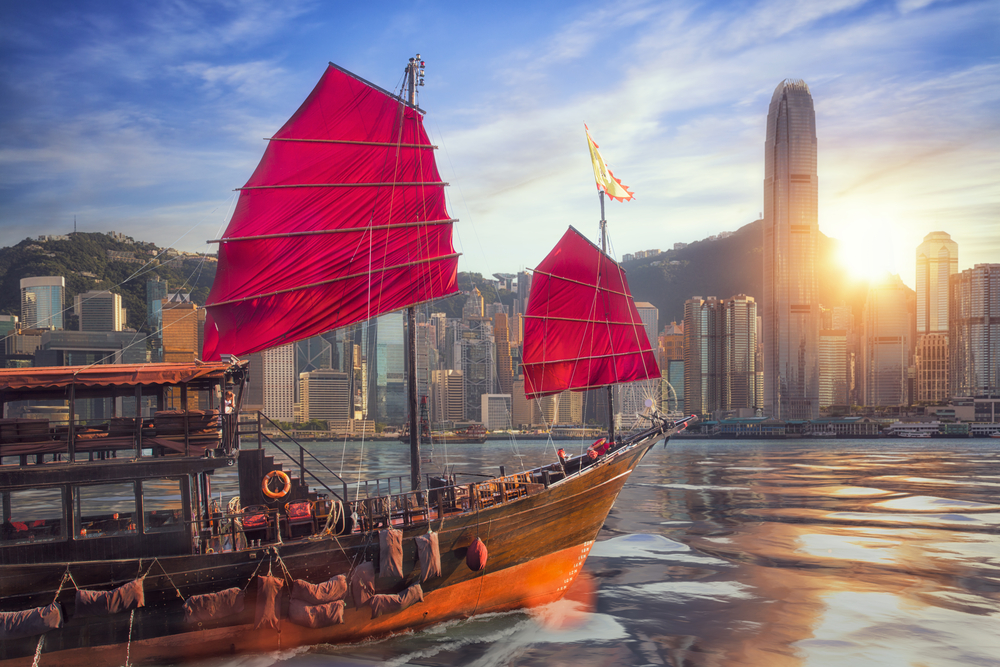Hong Kong's tower has long been a hive of busy worker bees that depend on the city's efficient transportation system to get them from apartment to office, shopping mall to restaurant, and back again.
Most people use the Mass Transit Railway (MTR), a subway and train network with over 150 stations scattered across Hong Kong Island, Kowloon, Lantau, and the New Territories. But given the island's hilly topography, there are many more creative ways to get from point A to point B, and for visitors, it can be much more rewarding to slow down, stay above the ground and savor the journey.
Take the Star Ferry between Hong Kong Island and Kowloon (and vice versa)
Yes, they are slower than the Mass Transit Railway (MTR), but the iconic green and
white Star Ferries epitomize slow travel at its best. Climb aboard for
breathtaking skyline views (day or night), a tangible sense of history, and the
best photo opportunity of your trip. Even better, it costs less than a cup of
tea.
Two types of Star Ferry tickets are available (upper deck
and lower deck, and two routes are available (Kowloon to Wan Chai). There is an
increased price for tickets on the upper deck (up to HK$3.70 on weekends), but
these tickets have air conditioning and provide a better view.
Visit us for: Hong Kong Visa from Pakistan
Ride the Northern Trams of Hong Kong Island
Resembling lightened London double-decker buses, the
"ding dings" criss-cross the eastern and western districts of Hong
Kong Island. It's a cheap, quiet, and scenic way to get between Central and the
more laid-back Kennedy Town, for example, or to the shopping mecca of Causeway
Bay in the other direction.
The flat rate is HK$2.60, using either the exact amount in
coins or an Octopus card. When you get off the tram, pay at the front by using the
turnstiles at the back. Take advantage of the best views on the upper deck by
snagging a seat up front.
Hong Kong's most famous tram, the Peak Tram is not a tram,
but a remarkably steep funicular. The route was upgraded in 2022, and the trams
now carry twice as many passengers – 210 in total – for the 396m (1,299ft)
vertical ascent to Victoria Peak and the best view in Hong Kong.
Save your legs by driving the world's longest outdoor people carrier
Connecting Central's office buildings to more residential
areas further up the island, the zigzag Central-Mid-Levels Escalator is a
lifeline for Hong Kong, moving nearly 80,000 people a day for the journey from
800 m (2624 ft) (until morning work, standing 10 a.m. to midnight).
With multiple hop-on and hop-off points, it's perfect if
you're heading to that hip new bar in SoHo and don't want to sweat through the
exhausting, wet streets. It's also convenient for getting to Tai Kwun, Hong
Kong's former Central Police Station turned heritage arts complex.
Host a taxi (but watch out for colors)
Taxis are cheaper than you'd think for a city like Hong
Kong, and the retro-style Toyota cars are spacious and comfortable (and who
doesn't love those self-opening doors?).
Taxis are color-coded, but for most urban journeys you will
see red, which also happens to be the most expensive type, charging HK$27 for
the first 2 kilometers (1.2 miles) and 1.90 $HK for every 200m (656ft) and
minute of waiting thereafter. Green taxis serve the New Territories, while
light blue taxis are for Lantau.
Must Visit:
20 Must-Visit Attractions in Hong Kong
The Ultimate Hong Kong Travel Itinerary
Hong Kong Itinerary: What to do in 4 Days
Make sure you get an Octopus card
The Hong Kong Reloadable Travel Smart Card saves you a
little money on travel but more importantly saves time - no need to hunt for
exact change or queue at ATMs.
The Octopus card costs HK$150, which includes a refundable
deposit of HK$50 and a travel credit worth HK$100. You can use it on most means
of transport, including taxis and the Peak Tram; you can even use it to enter
the Happy Valley Racecourse. Instead of using your smartphone or watch, you can
use the Octopus app and travel using Samsung Pay or Apple Pay.
Octopus cards are available for purchase from vending
machines at Mass Transit Railway (MTR) stations, as well as convenience stores like 7-Eleven.
Take a ferry to the Outer Islands
Ferries to outlying islands depart from the central piers.
They're reasonably priced and air-conditioned, and some have a basic bar that
serves snacks and cold drinks. Tickets can be purchased the same day from
kiosks at the entrance to each pier. Ferries to and from the outer islands can
get busy on Saturday afternoons and all day Sundays, especially in the warmer
months.
Don't forget the MTR
Clean, fast, safe, and carrying around four million people
every day, Hong Kong's MTR (Mass Transit Railway) operates from 6:00-AM to
somewhere between midnight and 1:00-AM.
Tickets are cheap compared to many other cities around the
world: between HK$5 and HK$30, although fares to stations bordering mainland
China (Lo Wu and Lok Ma Chau) cost up to $55 HK. If possible, it is best to
avoid peak hours: 7:30-AM to 9:30-AM and 5-PM to 7-PM on weekdays.
Read More:
A 48-Hour Guide to Hong Kong
Visit Hong Kong Must-Visit: The Peak
The First-Timer’s Travel Guide to Hong Kong
Best Areas and Hotels where to stay in Hong Kong
Related Articles:
Netherland visit visa from Pakistan
apply Canada visa online
US visa application
Bangkok visa for Pakistani
UK visa application
US immigration visa
types of US visas
Canada Visa Requirements
Travel Related Articles:
Spain Visa
Australia Visa
Austria Visa
Bahrain Visa
Belgium Visa
China Visa
Cambodia Visa
Canadian Visa
Flights Ticket
Dubai Visa
Umrah Packages
Best Travel Guide
Global Travel
Tourism Blogs
Germany Visa








0 Comments